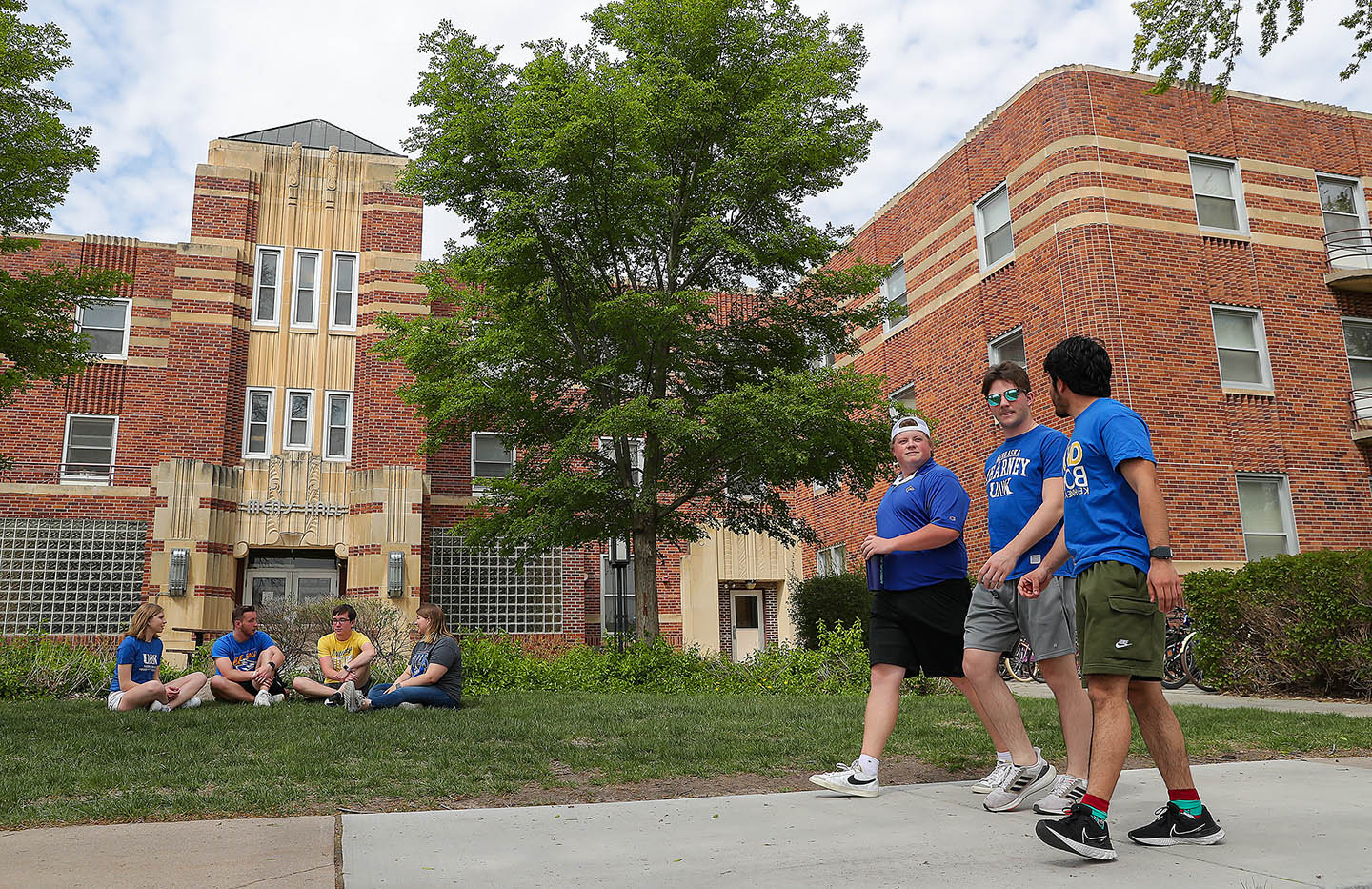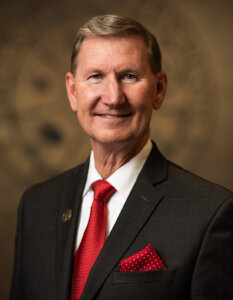
KEARNEY – The University of Nebraska at Kearney recorded a 5.4% increase in first-time freshmen enrollment for fall 2023, bucking a national trend. In graduate student enrollment, UNK has a 1.2% increase.
The official enrollment data, reported at census (sixth day of the semester), shows a total enrollment of 6,017 – a slight decrease from 6,041 last year. First-time, full-time freshmen increased 6.1%, and first-time transfers increased one student over last year to 326.
The data indicates UNK students are taking more credit hours and are more likely to be full-time, with total student-credit-hour production increasing just under 1%. Full-time graduate students increased 11.7% over last year, with full-time undergraduates increasing 0.5% for a total increase in full-time students of 1.3%.
The largest undergraduate program of study among freshmen is health science, with nearly 23% of first-time freshmen (211) majoring in this area. That’s a 21% increase over last year, and reflects the growing success in undergraduate health science education at UNK. First-time freshmen increased 23% in the College of Business and Technology, including a 55% increase in industrial technology majors and a 10.3% increase in management majors. Total enrollment increased 5.7% in the College of Business and Technology.
Graduate students total 1,793, with the vast majority participating in online courses. Graduate enrollment increased 19.6% in on-campus students, and just under 1% in distance-only students. Graduate student numbers increased in speech-language pathology, by 31% (to 92), Master of Business Administration, by 22.7% (to 81), and educational administration, by 4.3% (to 145). Each of these programs recorded their highest enrollment ever.
Out-of-state and international student numbers remain strong, with 1,109 non-resident students. UNK students are from 46 states (none from Rhode Island, Hawaii, Vermont or Delaware), with non-resident students comprising 17.4% of the student population. The largest number of students from states outside Nebraska are Colorado (145), Kansas (111) and California (56). Students are from 62 countries – the largest number ever and an increase of 10 countries from last year. The countries with the highest numbers are Japan (112), Mexico (54), Nepal (19), China (17), South Korea (11) and India (10).
Students are from 91 Nebraska counties, with UNK recording the most students ever this fall from both Hall County (378) and Lancaster County (371). Demographic data indicates increases in student diversity. The number of students who are Hispanic increased to 759 – the largest ever – up 3%. First-time freshmen students who are Hispanic numbered 131 – also the highest number ever, and a 10% increase over fall 2022. The number of Hispanic students has increased 46.8% since 2013. UNK’s Black or African-American students number 138, which is tied for the largest number ever, and an increase of 15% over last year. UNK enrolled 252 non-resident alien students, a decrease of 5%.
The National Clearinghouse Student Research Center reports that nationwide, undergraduate enrollment in public four-year institutions has decreased four out of the last five years, with the Midwest region recording greater losses, attributed to demographic and economic changes. Enrollment stability has become an important performance indicator for institutions of higher education, said Kelly Bartling, UNK vice chancellor of enrollment management.
“The increase in first-time freshmen and graduate students represents an all-campus effort on recruitment and retention,” Bartling said. A five-point plan to increase undergraduate enrollment includes increasing the number and size of scholarships, an emphasis on student success and completion, expertise in first-generation and Hispanic student recruitment and success, being transfer-friendly, and focusing on career and internship development.
“What connects all of these efforts is a student experience focused on wellness and belonging,” Bartling said. “UNK has realigned staff and services to support students’ mental health, their connection to other students as well as faculty and staff, and the experience that UNK promises: Top-quality academic programs with people who care in a supportive environment where students can thrive.”

University of Nebraska enrollment holds steady at 49,419
Consistent with projections, enrollment at the University of Nebraska System is holding steady at 49,419 for fall 2023.
The University of Nebraska-Lincoln and UNK both saw growth in the key demographic of first-time freshmen, systemwide enrollments of graduate and professional students increased, including a record-high graduate enrollment at the University of Nebraska at Omaha, and the University of Nebraska Medical Center has its 23rd straight record enrollment, among other highlights.
Overall, student credit hours are also up and the number of full-time students grew, both positive signs in relation to the university’s goals to increase timely graduation rates and provide more talent for Nebraska’s workforce. Enrollments in high-demand workforce areas, including engineering and agriculture at UNL, information science and technology at UNO, and health science and business and technology at UNK, are also seeing positive growth trends.

The total headcount enrollment, which includes all four campuses in the NU System plus the Nebraska College of Technical Agriculture, is a decline of 0.3% from fall 2022, or 148 students. The figures align with the 2023-24 operating budget approved in June by the Board of Regents, which assumed flat enrollment.
NU System President Ted Carter said he was pleased to see enrollment stabilize after two years of declines and credited campus teams for their work in engaging prospective students. He added that student recruitment and retention will continue to be an “all-hands-on-deck” effort across the university system, given Nebraska’s urgent need for more highly skilled workers with postsecondary education.
“A strong, growing state of Nebraska is directly linked to a strong, growing University of Nebraska,” Carter said. “While our university is not immune to demographic realities and other challenges facing all of higher education, the needs of our workforce and state are too important for us not to be completely focused on attracting, retaining and graduating as many students as possible.
“I am cautiously optimistic that we have turned a corner. As our Five-Point Plan for elevating the University of Nebraska’s competitiveness and success makes clear, student recruitment is at the top of our priority list. We will continue to be creative and aggressive in building new strategies for making certain all students know there is a place for them at the University of Nebraska.”
Included in Carter’s plan are goals to blanket statewide events and schools to ensure every prospective student is aware of the opportunities available to them at the university. The university also plans to review options for more competitive full scholarship programs to attract top students.
Those efforts will build on steps the university has taken in recent years to expand affordable access to quality education to more students, including the creation of the Nebraska Promise financial aid program, elimination of application fees, and tuition rates that remain well below peer institutions.
Carter noted that the university’s efforts to create access and opportunity are showing results: More than one-quarter of all NU undergraduates are now the first in their families to attend college. The university also enrolls students from every Nebraska county and all 50 states.
“Higher education is a transformative force in a student’s life, and in the life of our communities and state as a whole,” Carter said. “The breadth of educational opportunities, world-class research and engagement that the University of Nebraska offers is unmatched in our state. I’m proud that so many students and families, along with our many partners across the state, continue to recognize the value and impact that our university provides.”
Systemwide enrollment totals
- University of Nebraska System total headcount: 49,419 (0.3% decrease)
- First-time freshmen: 7,865 (1% decrease)
- Undergraduate students: 36,172 (1.2% decrease)
- Graduate students: 9,718 (2.3% increase)
- Professional students: 3,529 (2.5% increase)
- Resident students: 37,515 (Flat)
- Nonresident students: 11,904 (1% decrease)
- Full-time student enrollment: 39,555 (0.2% increase)
- Student credit hours: 599,223 (0.3% increase)
Campus enrollment totals
- University of Nebraska-Lincoln: 23,600 (0.9% decrease)
- University of Nebraska at Omaha: 15,015 (0.3% decrease)
- University of Nebraska at Kearney: 6,017 (0.4% decrease)
- University of Nebraska Medical Center: 4,555 (3.4% increase)
- Nebraska College of Technical Agriculture: 232 (7.2% decrease)